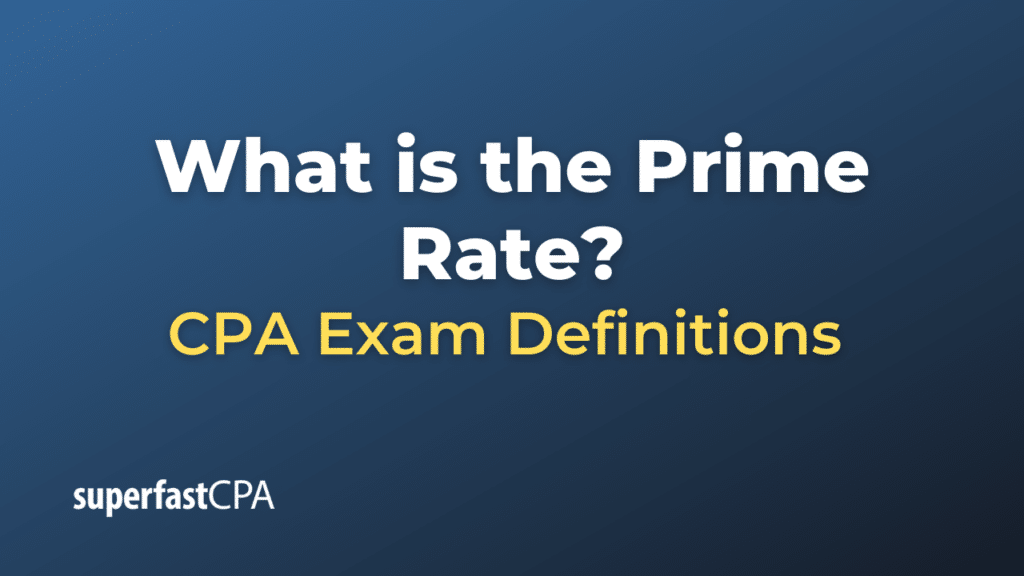Prime Rate
The prime rate, also known as the prime lending rate, is the interest rate that commercial banks charge their most creditworthy customers, which are usually large corporations. The prime rate is often used as a benchmark in setting the interest rates for various types of loans, including personal loans, car loans, and mortgages.
The prime rate is determined by the federal funds rate, which is set by the Federal Reserve in the United States. The federal funds rate is the interest rate at which banks lend funds to each other overnight. When the Federal Reserve changes the federal funds rate, it influences the prime rate.
In essence, if the Federal Reserve increases the federal funds rate, banks will typically increase their prime rates (and thus the interest rates for loans) to adjust for the higher cost of borrowing. Conversely, if the Federal Reserve lowers the federal funds rate, the prime rate will often decrease as well, which can lead to lower interest rates for loans.
It’s important to note that although the prime rate is defined as the rate for “most creditworthy” customers, individual borrowers’ interest rates will vary depending on their own credit scores, the type of loan, and other factors. A bank’s prime rate serves as a starting point, and lenders may charge a rate over and above the prime rate based on the risk associated with lending to a particular borrower.
Example of the Prime Rate
Let’s consider an example involving the prime rate and its effect on personal loans.
Suppose the Federal Reserve decides to increase the federal funds rate due to positive economic indicators. As a result, the commercial banks decide to increase their prime rate from 3.25% to 3.75%.
Now, let’s say you’re planning to take out a personal loan, and the bank usually charges the prime rate plus 2% for this type of loan to account for risk and other factors. Before the change, you would have been offered a loan with an interest rate of 3.25% (prime rate) + 2% = 5.25%. But after the prime rate increase, your loan’s interest rate would be 3.75% (new prime rate) + 2% = 5.75%.
The increase in the prime rate leads to an increase in your personal loan’s interest rate, making the loan more expensive for you. This example highlights how changes in the prime rate can affect the borrowing costs for individuals, even though the prime rate is technically the rate for “most creditworthy” customers (usually large corporations).
Remember that in real-life scenarios, the interest rates offered to individual borrowers depend on a variety of factors, not just the prime rate. Your credit score, income, loan amount, loan term, and other considerations also play a role in determining the rate you’re offered.














